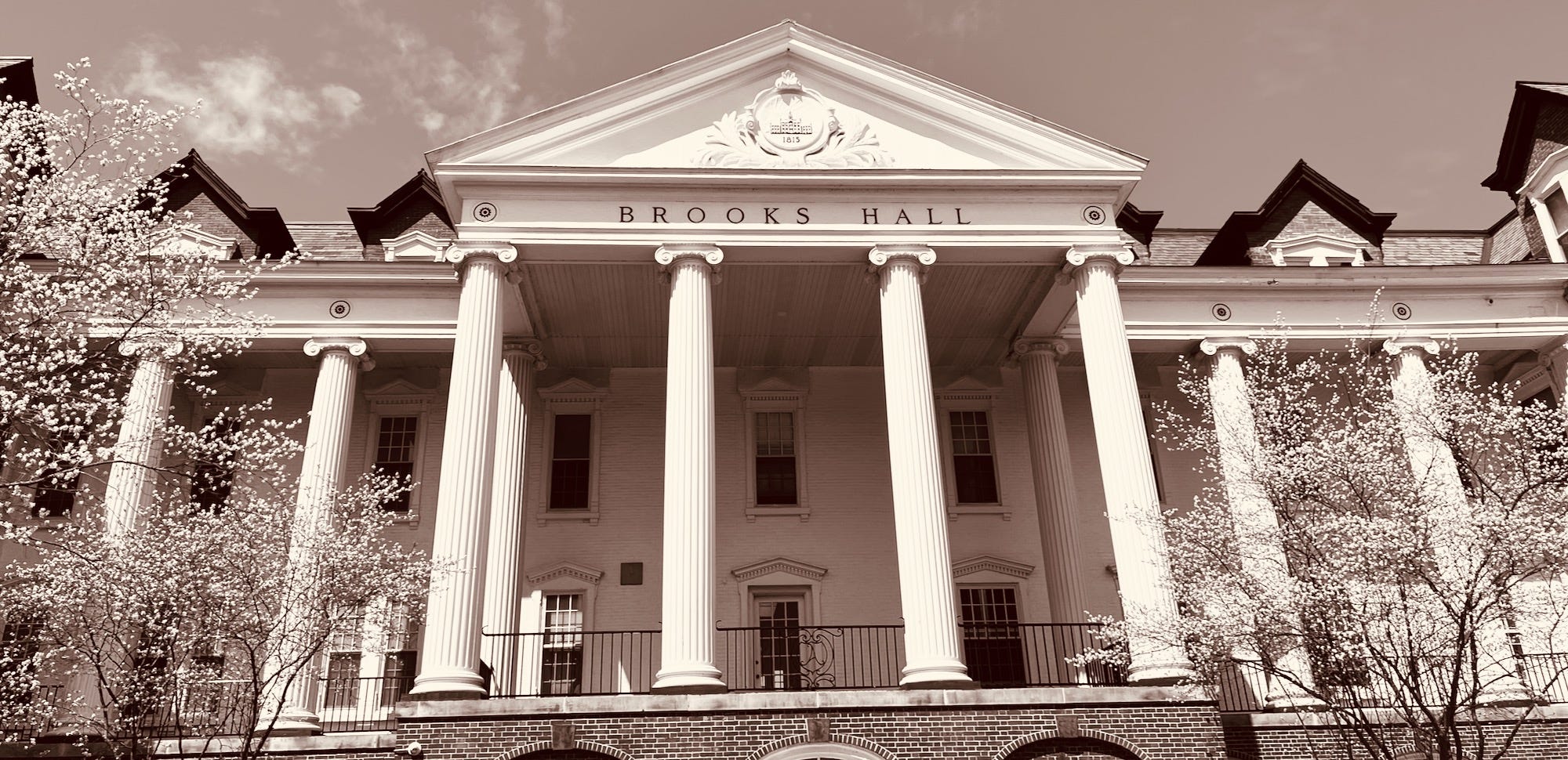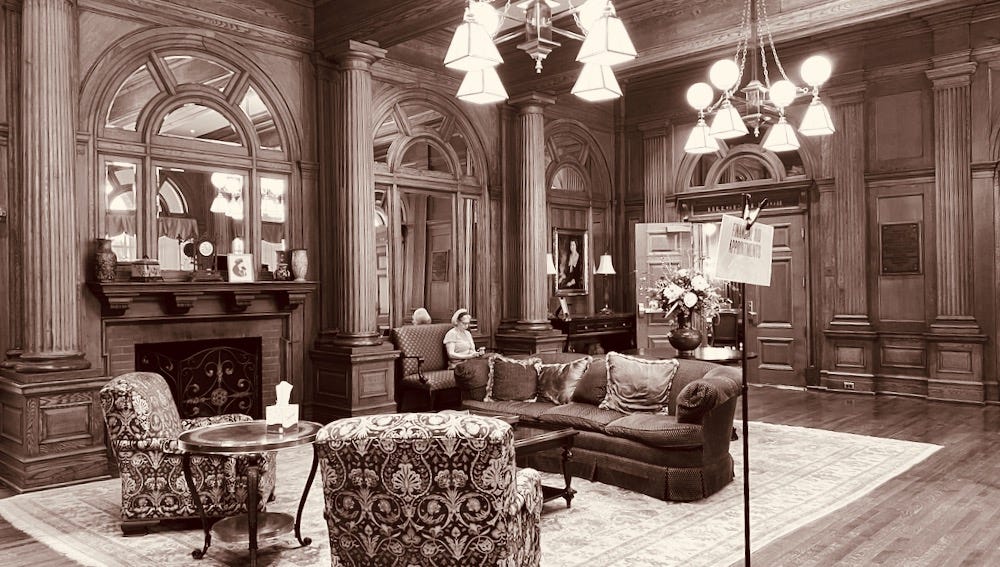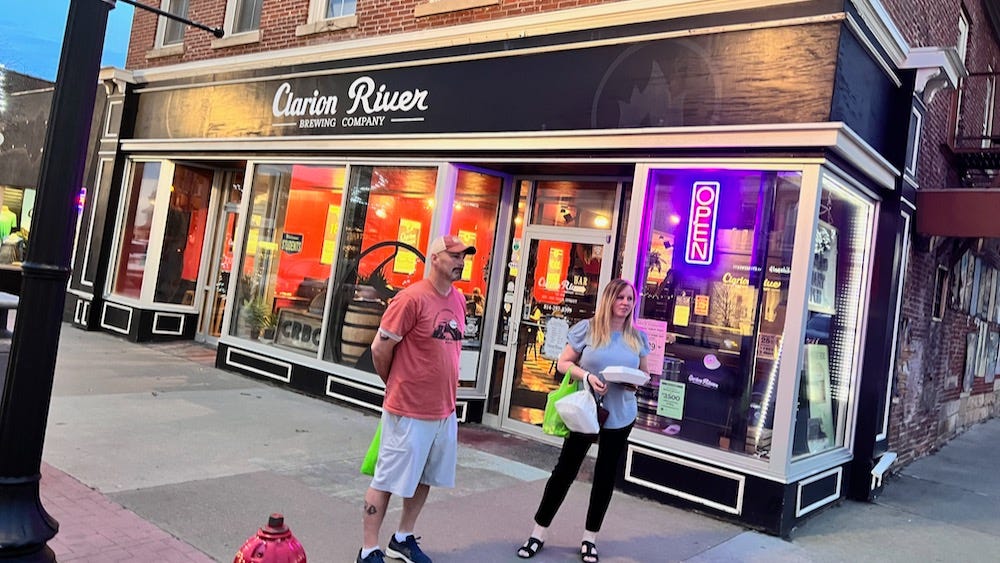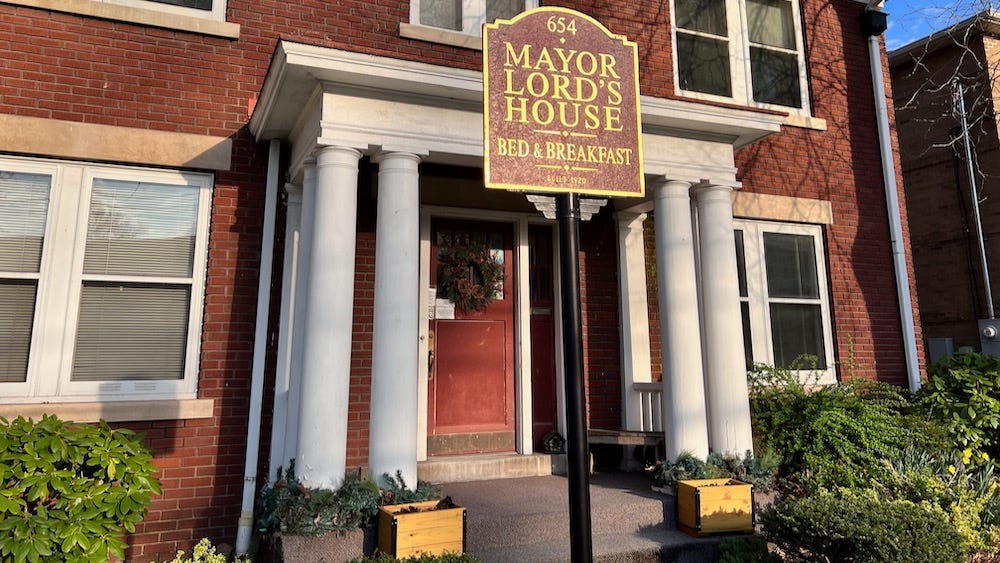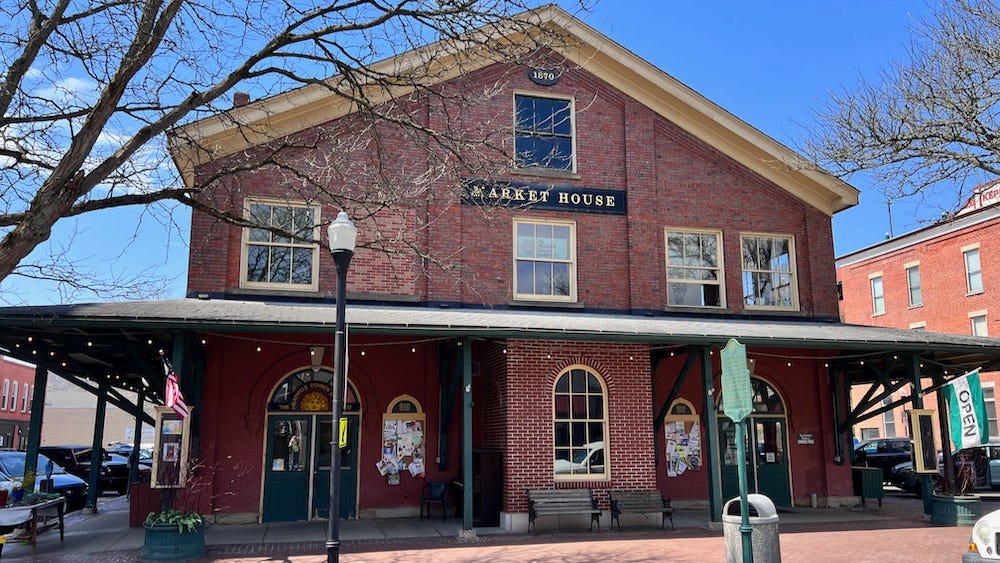Meadville and the Maw of the Higher Education Industrial Complex
The appeal of college for the young mind is irresistible. Its value is too often doubtful.
We experienced something regrettably familiar in our meeting with the financial aid officer during our recent college tour. My wife, daughter, and I sat across a table studying a piece of paper listing the fees and discounts applied to my kid’s first year of school. The young woman politely pointed out the numbers, explained what they meant, and then led us to the bottom line that represented the balance left over — $22,000, or roughly half their listed tuition. The only thing missing was the officer leaving the table to speak with her manager.
Who among us doesn’t dread car shopping? After the excitement of a test drive and the intoxication of that new-car smell, the negotiations begin. The process seems diabolically designed to beat the customer into submission and resignation, signing the endless paperwork feeling dirty, suspicious, and used. Over my lifetime, I’ve endured that process “only” five times, and each time drove off the lot with my craw in pain.
Deciding on a college for your child evokes car shopping times ten — ten times the stress, the research, the effort, and, of course, the cost, and no warranty. We all want what’s best for our kids, but when we get to this point and discover that the one thing standing in the way of their future is a six-figure mountain of debt, sleeping easy becomes a pleasant memory.
The child, of course, doesn’t quite get it. For those of us who’ve lived a life of work and toil and of credit card juggling, we know better. Debt was a four letter word in my house growing up. I saw its affects. My mother did her best to hide the stress from us, but we could feel the burden she carried. I didn’t have to be told. I knew debt was a prison, and one where I would do time as well. A parent wants more for their kids, and debt is the opposite of that.
Nonetheless, we have a system of higher education that generates debt by the trillions, and my wife and I now brace ourselves against its specter.
The Cozy Abyss: The College Tour Experience
We know hapless parents who trudged off and toured ten or more different schools. We’ve so far toured only three before this trip out to Allegheny College in Meadville, a very small liberal arts school in western Pennsylvania. The eight-hour trek from Jenkintown across I-80 through Pennsylvania’s sparsely populated midsection offers the traveler mostly fast food chains and trucker service plazas within a half-mile radius of the exits.
A drive like that offers a lot of time to think, and I thought a lot about how my kid might get home during breaks. She has no car (a good thing) nor even her license (not so good). The last passenger train passed through Meadville in 1970, and the nearest airport with service to Philadelphia is almost two hours away. Once we drop her off in late August, we might not see her again until Thanksgiving. As crazy as she often drives me, the pang of ache I felt thinking of her away from home on her own for so long took me by surprise.
The campus of Allegheny College extends up a hill north of downtown Meadville. It checks off all the hallmarks of the quintessential collegiate experience. It folds a mix of architectural tradition and modernity into a gracious landscape that offers students a buffer of serenity against the troubles of the outside world. It’s a small school — only about 1600 students, but it’s been around since 1815. Despite its size, it offers degrees in a variety of subjects. Knowing it has to compete against schools closer to major population centers, it puts on a good show for prospective students. Our tour guide was a lovely, enthusiastic young woman, a junior from New York, who breathlessly sang the praises of her Allegheny experience. At the end of the tour on such a beautiful spring day, how could we possibly say no? Why bother looking anywhere else?
Sad to say, Meadville fails to present itself as a college town. It does not have the character of a Missoula or an Amherst. The housing stock in the encompassing neighborhoods features some amazing Victorians left over from its heyday, but clearly many need work. Meadville is still the home of Channellock pliers and Smuckers has a pet food factory there, but generally its heavy industry withered away years ago. From the car window, we saw few obvious attractions for young adults.
The Cost/Benefit Gap
The college industrial complex is simply nuts. Since 1980, tuition costs have exceeded the rate of inflation by 500%. I could wax dramatic about the burdens it imposes upon middle class parents who’ve endured economic setbacks over the course of 9-11, the 2008 financial crisis, and lately the pandemic, but the story is oft-told. How does one plan to save for two or three children to pay for something with such a skyrocketing price tag? Why have our attempts to make college more affordable for everyone had the opposite effect?
Ben Stein (of “Win Ben Stein’s Money) once proffered the advice that parents should never sacrifice their retirements to pay for their child’s college education. That, he reasoned, was their responsibility. I completely agree, and in some subtle and not-so-subtle ways, I tried to get that message across to my kid. We can’t cover that kind of expense, and when we say that to her, we also feel like failures.
I entered the University of Massachusetts in 1979 when tuition was a mere $1200 per year. Today, it’s just over $16,500, or quadruple the inflation-adjusted cost. I won’t say that all of the university’s 20,000 students were slackers and partiers in 1979, but in those days, UMass admitted in-state high school graduates with a minimum C-average — a hurdle I barely cleared. I would spend five semesters at the university picking courses out of the catalogue like appetizers off a menu, never declaring a major, and almost flunking out twice. I finally opted to leave when I decided what I wanted to do and realized that UMass wasn’t the place to do it.
My kid doesn’t have that option.
We seemed to have normalized graduating with $130,000 in student loan debt — no matter the degree — which sticks the borrower with a $1400 per month payment for ten years. I don’t think most 18-year-old brains can comprehend the enormity of the burden that awaits them on the other end. I think some otherwise well-meaning parents struggle with that as well.
Despite our concerns and revulsions toward this system, we see little progress restoring some balance to that cost-benefit equation. Instead of doubling down on a bad idea, perhaps we should concentrate our efforts on identifying and popularizing alternatives to this broken scheme. I’ve alluded to some in a previous article, but I hope we can remove the stigma of a career that does not require a four-year degree, while recognizing the value of those that acquire degree-level skills outside of the academic environment. Kids push to go to college because their parents did and because the alternatives seem grim or socially isolating to them.
My wife and I have done our best to present those options, but parents like us swim upstream against this trend. When all our daughter’s friends are going off to college, when all her schooling nudges her in that direction, and when she tours a college and imagines herself warmly embraced within its cozy unreality, resistance is almost futile.
Have an experience shopping for colleges? Please share in the comments!
Trip Recommendations
While most of I-80 has relatively little to coax away the roadside enthusiast besides some great scenery, we did stop in Clarion for dinner at the Clarion River Brewing Company. Busy on a Friday night, the menu featured a healthy array of brew varieties and locally sourced beef, but they served “smash burgers”, which is a trend we hope dies soon. The pulled pork Cuban sandwich easily bested the burgers.
We loved our lodging in Meadville. Close to the campus, the Mayor Lords Bed & Breakfast extends the college’s warm embrace for parents stressing about the decision.
Despite its name, Mayor Lords doesn’t serve breakfast. Instead they give guests vouchers for the Pampered Palate Cafe, which served a fine cranberry scone and a coffee maybe worth the detour off of I-79.
A central attraction of downtown Meadville is the Market House which showcases local arts, crafts, and foods. We came home with a half-pound of the Happy Mug traditional Columbia coffee, roasted in Erie. Drinking it as I type, I can recommend it for anyone who likes a smooth but robust brew.
Leaving Meadville behind, we drove to Pittsburgh alternating between US-19 and I-79. Timing would not allow us to stop at the Muddy Creek BBQ in Harmony, but — wow — did it look like it had potential. Let me know if I missed out.
Finally, returning to Pittsburgh after more than ten years, it’s obvious the city continues its upswing. Suffice to say that the city has finally swept off a lot of that rust belt residue left by the collapse of the steel industry, but the past twenty years also swept away many beloved industrial-era urban attractions. Once a city teaming with old-guy bars like Chiodo’s and mom-and-pop eateries vying for best fish sandwich or pierogis, the influx of Millennials working STEM jobs brought scores of new coffee shops and gastro pubs in their wake. Lawrenceville’s resurgence reminds me of a similar rebirth in Philadelphia’s Manayunk neighborhood in the early 90s.
But nothing more poignantly symbolizes the transformation of Pittsburgh than the removal of the US Steel logo atop its tallest skyscraper for that of the University of Pittsburgh Medical Center.




